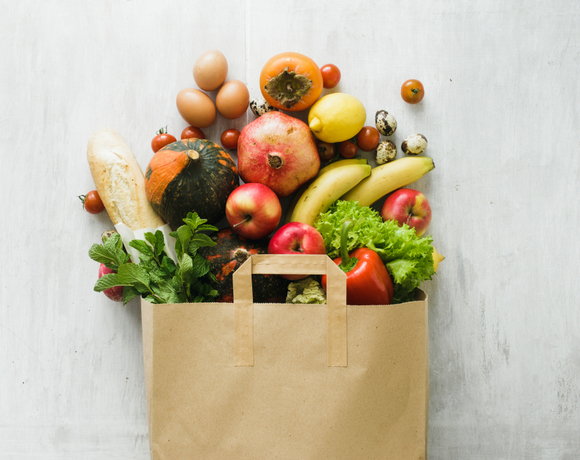If you find that your income has been reduced by the current COVID-19 pandemic, or simply want to lower your food budget to free up money to be more charitable or support local businesses, we have put together some tips to help.

Plan Ahead & Be Flexible
This may sound like conflicting advice, but both can be helpful strategies. Plan ahead by listing out the meals and snacks you and your family will have. If you are working and schooling from home this could mean more than your usual number of eating occasions. If you have children, involve them in the planning process. Some families let each person plan one dinner. As a parent, you can set some rules that give children decision making power without leading to cupcakes for dinner. For example, for our meals there must be at least three food groups represented and at least one must be a vegetable. Start with doing inventory of what you have on hand. Plan to use ingredients before they go bad by building them into your meals and snacks. Group common ingredients so that you can plan for leftovers. If you are going to roast a chicken for dinner one night, consider having chicken tacos a day or two later so that you can utilize the leftover chicken. This helps to reduce time spent cooking, cuts food waste and lowers cost. Within your overall plan, allow for some flexibility. You may find that some items are sold out or that others are on sale. Look for swaps that keep your overall plan in mind but let you take advantage of items that are on sale or seasonal. Barilla offers Recipe Builders that provide recipes with suggested ingredient swaps to let you customize to your tastes or what you have on hand.
Shop From a List
Whether you are an old school paper list person or have embraced technology, shopping from a list can help keep you organized and on budget. If you are shopping online, don’t be afraid to spend some time building your cart. If you don’t have time to sit down and plan your coming week in one sitting, you can break the task into pieces and add items as you decide on your meals. If getting a time slot for delivery or pickup is a concern, most platforms will allow you to modify your cart after you place your order. Start your order with some basics that you know you will use to secure your time slot and then add items as your plan comes together. If you plan to do your shopping in person, see if you store offers an online or app based shopping list. This can make your planning and shopping much easier as online lists often sort your items automatically by the area of the store where they can be found. Some will even let you know if items are on sale or in stock and add electronic coupons.
Put Plants First
Plant based foods are often less expensive than animal ingredients. Increasing the amount of fruits, vegetables, beans, whole grains, nuts and seeds you eat while reducing meats and other animal ingredients can both lower your food costs and improve your health. You don’t need to become vegetarian to see the benefits of eating less meat. Simply reducing portion sizes or how often you eat meat can make a big difference. When shopping for fruits and vegetables look for programs that offer imperfect produce. These programs offer food that is perfectly safe, but didn’t meet standards for size or shape to be part of standard retail programs. Imperfect produce can often come at a lower cost and buying it has the added benefit of reducing the amount of food that is wasted. Speaking of food waste…
Stop Food Waste
Nothing can derail your food budget like throwing away food. In addition to planning for use of leftovers, there are other strategies you can use at home to minimize your food waste. Keep your refrigerator organized. It can be easy to forget that you have strawberries waiting to be eaten if you can’t see them behind the milk. If possible, store leftovers in clear containers so they are easily visible. Date your food so you don’t have to rely on your memory of when something was opened or prepared. I know a chef who keeps a roll of masking tape and a marker in his kitchen at home to make it easy to date everything. Use your freezer! If you have fresh items or leftovers that you won’t use before they go bad, freeze them. Make clean-out-the-fridge recipes. Soups, stir-fry meals, frittatas and smoothies are perfect for using up a variety of ingredients before they go bad. Click here for more tips on reducing food waste.
Consider Cost vs Convenience
Individual packs of snacks and drinks can be handy if you are packing lunches, but that convenience comes at a cost. Bulk items are usually less expensive. To make them more packable and control portion size, use reusable containers to repack them yourself. This will cut costs and send less packaging to landfills.
Related:
Save the Food // How to Stop Food Waste at Home // How to Stock Your Kitchen



Leave a Reply
You must be logged in to post a comment.